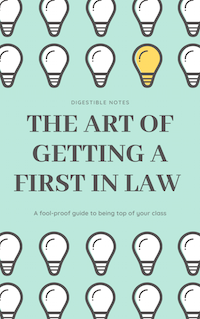Causation Cases
R v Adams [1957] Crim LR 365
Facts: The defendant, Dr Adams, administered a lethal dose of pain killers to a terminally ill patient.
Held: The defendant was acquitted of murder. Devlin J stated that "a doctor is entitled to do all that is proper and necessary to relieve pain even if the measures he takes may incidentally shorten life"
R v Benge (1865) (Pre-SCJA 1873)
Facts: The defendant, a foreman plate-layer, misread the timetable as to when the train was to arrive. A workman was sent ahead to signal an approaching train to stop, but instead of going 1000 yards ahead he went only 540 yards, leaving less time for a train to stop. As a result, the train did not stop before reaching the area where the works were taking place, resulting in the train crashing.
The defendant argued that, although he was negligent, the accident could not have occurred without the negligence of the flagman in not going far enough up the tracks and the failure of the engine-driver to pay careful attention.
Held: The defendant was found to be guilty. It was irrelevant that the crash might have been avoided if other persons had not also been negligent; the defendant had been the material and substantial cause of the accident.
The Art of Getting a First in Law - ONLY £4.99
FOOL-PROOF methods of obtaining top grades
SECRETS your professors won't tell you and your peers don't know
INSIDER TIPS and tricks so you can spend less time studying and land the perfect job
We work really hard to provide you with incredible law notes for free...
The proceeds of this eBook helps us to run the site and keep the service FREE!

R v Blaue [1975] 1 WLR 1411
Facts: The defendant stabbed an 18 year old women (the victim) after she refused to have sex with him, which punctured her lung. At the hospital, the victim was told that she would need a blood transfusion to save her life. However, she refused the blood transfusion as she saw it as being contrary to her religious beliefs (she was a practising Jehovah's Witness). The victim died the next day. The defendant had been convicted, at first instance instance, and was convicted of manslaughter on the grounds of diminished responsibility. The defendant appealed to the Court of Appeal arguing that the novus's refusal to accept the blood transfusion was a novus actus interveniens breaking the chain of causation.
Held: The defendant's original conviction was upheld (i.e. he was found to be guilty of manslaughter). The wound was still an operative cause of death (following R v Smith [1959] and R v Jordan (1956)) so no there was no novus actus interveniens. It has long been the policy of the law that those who use violence on other people must take their victims as they find them. This principle clearly applies to the mental as well as the physical characteristics of the victim, and the courts will rarely make a judgement as to whether the victim's response was reasonable.
California v Lewis (1899)
Facts: The defendant shot his brother-in-law, inflicting a wound which would have proved fatal within a relatively short period. However, the victim shortly thereafter cut his own throat, thus further hastening his death.
Held: The defendant's shooting was an "operative and substantial cause" of his brother-in-law's death, thus he was found to be guilty of manslaughter.
R v Cheshire [1991] 1 WLR 844
Facts: In a chip shop, the defendant shot the victim in the stomach and thigh. T§e victim was taken to hospital where a trachetomy was performed. Six weeks later, the victim suffered breathing problems because of the trachetomy scar and died. The defendant was convicted of murder at first instance and later appealed, arguing that the hospital’s negligence in not recognising and responding to the problems arising from the trachetomy was the real cause of death.
Held: The original conviction was upheld (i.e. the defendant was found guilty of murder); the hospital’s negligence did not break the chain of causation. The defendant's actions need not be the sole or even the main cause of death as long as they contributed significantly to that result; medical negligence did not exclude the defendant's liability unless it was so independent of his acts and so potent as to make his own contribution insignificant. Since the defendant had shot the victim this could not be regarded as insignificant.
R v Dalloway (1847) 2 Cox 273
Facts: The defendant was driving a horse and cart down a road without holding on to the reigns. A three-year-old child ran in front of the cart and was killed.
Held: The defendant was not liable as he would not have been able to stop the cart in time even if he had been holding the reins. This case is authority for the point that the result must be caused by a culpable act. Here the culpable act was not holding the reins, which was not the cause of death.
R v Hayward (1908) 21 Cox 692
Facts: The defendant chased his wife out of the house shouting threats at her. She collapsed and died. He did not physically touch her. She was suffering from a rare thyroid condition which could lead to death where physical exertion was accompanied by fright and panic. Both the defendant and his wife were unaware she had this condition.
Held: The defendant was liable for constructive manslaughter as his unlawful act (assault) caused death. The egg shell (thin) skull rule applied. He was therefore fully liable despite the fact an ordinary person of reasonable fortitude would not have died in such circumstances.
R v Jordan (1956) 40 Cr App E 152
Facts: The defendant stabbed the victim. In hospital, the fictim had almost recovered from the wounds, before being given antibiotics (terramycin), to which he suffered an allergic reaction. He was also given excessive amounts of intravenous liquids. New evidence - not available at the original trial - indicated that the victim’s death was most likely caused by the victim’s unusual reaction to the antibiotics.
Held: The defendant was not liable for the victim’s death; the victim died of the medical treatment and not the stab wound. The medical treatment was 'palpably wrong' and would have 'precluded' a jury from holding that death was caused by the defendant's action.
R v Malcherek & Steel [1981] 2 ALL ER
Facts: Two separate appeals were heard together in this case. In Malcherek the defendant had stabbed his wife. In Steel, the defendant was accused of sexually assaulting and beating a woman over the head with a stone. In both cases the victims had been taken to hospital and placed on life support machines. The doctors in the respective cases later switched off the life support machines as both victims were not showing any activity in their brain stem. The defendants sought to argue that the doctors' actions constituted a novus actus interveniens which broke the chain of causation.
Held: The conviction was upheld by the Court of Appeal. The doctors' decision did not break the chain of causation; both defendants' acts could be regarded as the cause of their victim’s death. The test of death is where the brain stem has died. Thus, at the time of switching off the machine, the victims were already dead.
R v Marjoram (1999)
Facts: The defendant, a youth, inflicted grievous bodily harm by forcing his way into 16 year old Jennifer Bluett's room on the third floor room in a hostel, causing her - in fear - to jump or fall (47 feet) to the ground through the window, receiving life-threatening injuries.
Held: D was guilty if such an outcome (i.e. Ms Bluett jumping out her window) was foreseeable by a reasonable person in D's position (whether or not D had actually foreseen it). It was held that a reasonable person could foresee such a reaction, so D was held to be guilty.
R v Pagett (1983) 76 Cr App R 279 (Court of Appeal)
Facts: The defendant (D), armed with a shotgun and cartridges, shot at police who were attempting to arrest him. D held a 16-year-old girl who was pregnant by him as a shield. The officers returned fire and the girl was killed. At first instance, D was convicted of manslaughter. He appealed against the manslaughter conviction on the issue of causation.
Held: The manslaughter conviction was upheld. The firing at the police officers caused them to fire back. In firing back the police officers were acting in self-defence. His using the girl as a shield caused her death.
R v Smith [1959] 2 QB 35
Facts: The defendant (D) stabbed the victim (V) with a bayonet during a fight in barracks. V's friend took him to the first aid post, but on the way, he dropped V twice. At the first aid post the medical officer was busy and took some time to get to V who died about two hours after the stabbing. Had he been given proper treatment he would probably have recovered.
Held: The treatment he was given was thoroughly bad and might well have affected his chances of recovery, but medical treatment correct or not does not break the chain of causation. If at the time of death the original wound is still an operating cause and a substantial cause, then death can be said to be a result of the wound albeit that some other cause is also operating. Only when the second cause of death is so overwhelming as to make the original wound merely part of the history can it be said that death does not flow from the wound.
R v White [1910] 2 KB 124 (Court of Appeal)
Facts: The defendant (D) put cyanide into his mother's lemonade drink, but she died of heart failure before the poison could kill her. The answer to the question 'But for what the defendant did would she have died?' is 'No’; she would have died anyway.
Held: D was acquitted of murder because he had not actually caused his mother's death.
Law Application Masterclass - ONLY £9.99
Learn how to effortlessly land vacation schemes, training contracts, and pupillages by making your law applications awesome. This eBook is constructed by lawyers and recruiters from the world's leading law firms and barristers' chambers.
✅ 60+ page eBook
✅ Research Methods, Success Secrets, Tips, Tricks, and more!
✅ Help keep Digestible Notes FREE

